2010 Arctic Cat F5 LXR Review
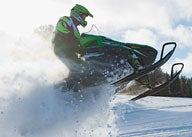
Reliable and versatile, the F5 LXR retains Cat’s legendary trail prowess.
Until Arctic Cat detuned its 600cc race sled and offered up the Sno Pro 500 for 2010, the most likely fun Cat had to be the F5. Then again, not every Arctic Cat enthusiast will want a race-bred race kitten, preferring the trail-tested and ultra reliable 2010 Arctic Cat F5 LXR instead. This trail tamer fits a much broader audience than the Sno Pro 500. It will be much more adaptable to serious trail riders as well as the occasional touring types. With its accent on comfortability, the F5 LXR leaves the serious play-racer to the Sno Pro while accepting the mantle of everyday versatility.
Engine Type:Horizontal In-line
Cylinders:2
Engine Stroke:2-Stroke
Valve Configuration:Reed Valve
Displacement:499 / 30.4
Starter:Electric
Turbocharged:No
View Full SpecThe 2010 Arctic Cat F5 LXR comes with a very durable — if not explosive — 500cc liquid-cooled twin of about 85-hp. One thing Arctic Cat manages to do is create a little pizzazz even in its appliance-reliable models like this one. The modestly powered 2-stroke twin should start every time you twist the key thanks to its electronic fuel injection. If the battery should go flat (though unlikely), a quick pull on the auxiliary starter cord will have this Cat running in no more than two pulls. Cat pioneered batteryless EFI and has the system down pat.
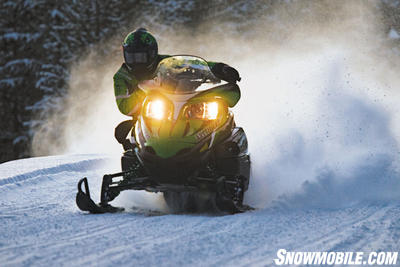 The F5 LXR is a versatile, fun-to-ride sled that’s relatively easy on the wallet.
The F5 LXR is a versatile, fun-to-ride sled that’s relatively easy on the wallet.The F5 drivetrain also proves itself virtually trouble free. Count on smooth driveaway with a good midrange to get out on the trail. With this Suzuki-built twin tucked low in the engine bay you will find the F5 grips corners exceptionally well. The overall placement of the Cat’s power system was designed to augment handling and trail-ability.
Grip and Go
Where engine placement can’t account for great handling, Arctic Cat engineers worked out the suspensions to make this one of the best handling trail sleds on the market. It may be aimed at comfort, but this is an Arctic Cat after all. These folks like their performance, whether it’s in a full out racer or a decked out touring turbo.
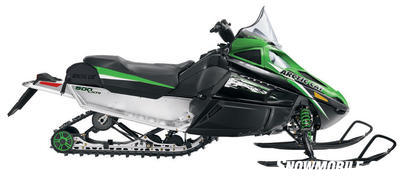 The 2010 F5 LXR features a zippered pouch in the seat for storage, new LED taillight and revised snow flap.
The 2010 F5 LXR features a zippered pouch in the seat for storage, new LED taillight and revised snow flap.The F5 LXR enjoys an 8-pound weight reduction thanks to a new seat, which features an integrated, zippered storage pouch. This replaces the plastic box used in last year’s seat. We’re really not sure how we feel about this. Give us a winter, but we’re hoping that our first reaction is wrong. We kinda figure that any zipper is prone to (a) freezing up from snow and ice, (b) breakage from ham-handed, impatient owners, and (c) difficulty in opening on those really wickedly cold January days. But, since Thief River falls, Minn., sits closer to the Arctic Circle than our offices and because those engineering types must have tested this zipper in their backyard last winter, we’ll give them the benefit of the doubt and go with the positive of weight reduction.
Of course, as with other ride-forward seating designs, the F5 LXR frees up a lot of room behind the rider’s butt, which means that you can add all kinds of accessory bags on the rear tunnel, back of the seat.
Performance
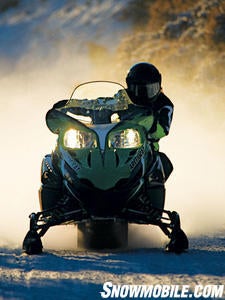 Depending on your mood the F5 LXR can be kick back touring sled or kick ass trail hot rod. You decide.
Depending on your mood the F5 LXR can be kick back touring sled or kick ass trail hot rod. You decide.We like the F5 LXR in general, but this detuned 499cc twin falls way short of our favored F5, which came with the 100-plus horsepower motor, which apparently couldn’t be cleaned up enough emissions-wise to keep in the model mix. Too bad as that engine really made the F5 one of the stealthiest sleds on the snow. Oh, well, get over it!
To grab a few extra miles per hour, the front wheels on the rear suspension have been moved inside the slide rails. That’s supposed to give the F5 a bit more top end. The unit is a familiar parallel rail design with a slide-action and coupling blocks to enhance cornering, acceleration and deceleration. This system really keeps the skis planted when you want to be aggressive in tight turns. For further ride enhancement the rear suspension utilizes torsion springs as well as rather basic hydraulic tube shocks. These pieces are a tip off that this is intended to be a price-leader at US$8,399 (CDN$10,499) — or just US$100 more than a Sno Pro 500.
Pioneered AWS
The Arctic Cat pioneered double wishbone suspension is now in its seventh generation and works extremely well. This version comes with the base hydraulic tube shocks, but chances are that most F5 LXR owners will rarely overheat them. If you are an aggressive rider the hydraulic shocks can fade and you might think about opting for an upgrade to gas bag shocks, which you can get through your dealer.
The AWS comes with a sway bar to keep the front-end level and retain ski bite. The skis should really dig into the corners as Arctic engineering specified a stiffer, deeper keel profile on the wider 2010 ski. This year’s ski measures six inches in overall width versus the 5.5 inch used last season. While they are deeper and wider, they actually weigh almost a pound lighter per ski for an additional weight savings.
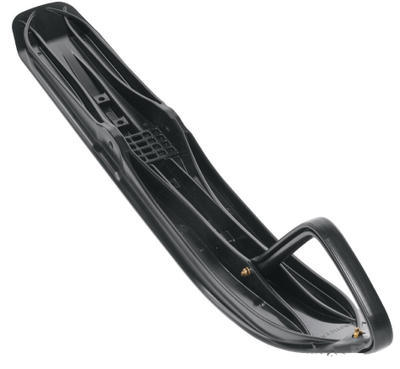 Even though it measures a half-inch wider and enjoys a deeper keel, the F5’s new ski actually weighs less than last year.
Even though it measures a half-inch wider and enjoys a deeper keel, the F5’s new ski actually weighs less than last year.This LXR version comes with the adjustable benefits that allow the sled to fit virtually anyone. You can personalize the handlebars, seat and footrests to suit your style of riding.
Since the advent of the performance-oriented Sno Pro 500, the F5 LXR is “it” for F5 models in 2010. It makes a very good choice for serious riders who want a fun-to-ride snowmobile that will be durable as a stone, reliable as a Maytag appliance and suitable for any snowmobiling occasion — long days touring, short days on tight adventure trails or simply just getting out for a few hours to enjoy a beautiful, blue-sky winter’s day. This is a very versatile Cat that provides outstanding ergonomics, good performance and recognized value.
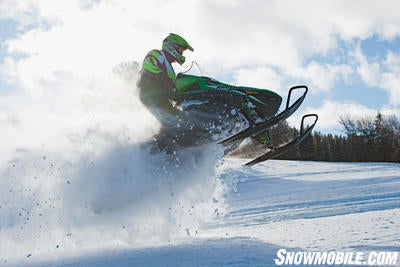
SPECS TABLE
| 2010 Arctic Cat F5 LXR Specs | |
| Engine | Arctic/Suzuki 499cc, two-stroke, liquid-cooled, twin; 38mm throttle body, batteryless electronic fuel injection |
| Horsepower | 85 (Estimated) |
| Drive | Arctic Diamond Drive |
| Front Suspension | Arctic AWS VII A-arm suspension; hydraulic twin tube shocks; 9.5-inches of travel |
| Rear Suspension | Arctic Slide-Action parallel rail slide with hydraulic twin tube shocks; up to 13.5-inches of travel |
| Length | 118.0 in |
| Width | 47.25 in |
| Ski Stance | 43.0 |
| Track | 15 x 128 x 1.0 Hacksaw |
| Fuel Capacity | 12.6 US Gal |
| MSRP | US$8,399 (C$10,499) |
Related Reading
2010 Arctic Cat F8 Sno Pro Review 2010 Arctic Cat Z1 Turbo EXT Review 2010 Arctic Cat Sno Pro 500 2009 Arctic Cat F5 LXR Review




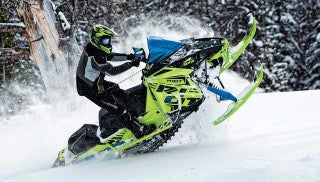



 Your Privacy Choices
Your Privacy Choices